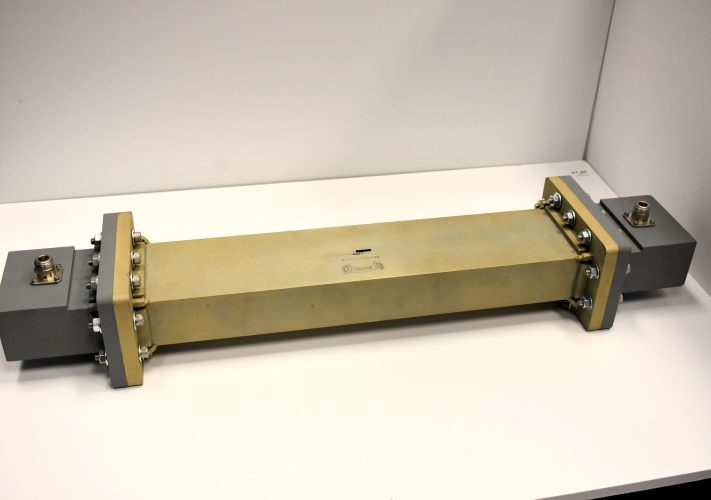
The waveguide cavity is a section of rectangular waveguide truncated with irises at both ends, therefore resonating at frequencies corresponding to half wavelength intervals of the cavity length. A small material specimen is inserted through a hole in the middle of the cavity, causing the resonance to be perturbed and that perturbation is used to determine the real and imaginary dielectric permittivity of the specimen. This method follows the ASTM D2520 standard method.

